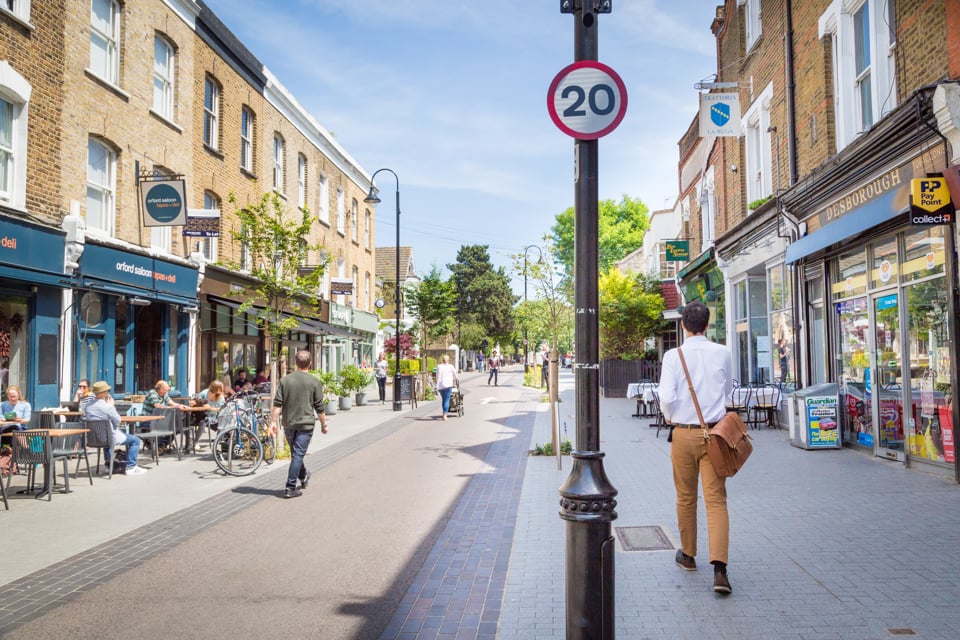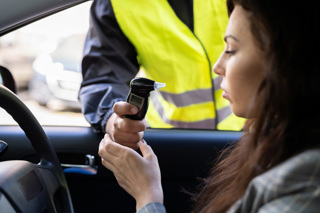The number of people killed and seriously injured on London’s roads fell by more than a third (34%) following 20mph speed limits being introduced between 1989 and 2013, according to Transport for London (TfL).
The research, the first of its scale in London, analyses more than 150 20mph schemes between 1989 and 2013, examining the three-year periods surrounding the implementation of each scheme.
TfL carried out this new analysis to fully understand the impact of road safety measures across the city over a longer time span.
The data shows that, with the exception of motorcycle fatalities, which did not change, 20mph schemes led to fewer fatalities and less severe injuries across every mode of travel.
The report shows that 20mph schemes significantly reduced the number of deaths and serious injury, including a 40% reduction in the number of people killed, compared against the background trend of 7% fewer fatalities across London borough roads
There was also a 35% reduction in collisions and a 36% reduction in casualties, against a background trend of 12% fewer collisions and casualties across all borough roads
The research acknowledges other road safety improvement measures implemented between 1989-2013 and recognises that the implementation of 20mph schemes on borough roads is not the sole cause of improved road safety in this time.
Lilli Matson, TfL’s chief safety health and environment officer said: “It is brilliant to see the long-term analysis in this report.
“It contains hugely important findings which show the difference that 20mph speed limits have made to road safety in London, and we are able to fully understand the impact of road safety measures across the city over a longer time span. Lower speed limits save lives.”
She added: “We’re committed to eliminating unsafe speeds across London, and the analysis in this report reinforces our approach.
“No death or serious injury on London’s streets is acceptable or inevitable, and we are determined that London continues to be at the forefront of making real and lasting change.”
The report demonstrates the positive impact of slower speeds on safety and supports the importance of similar measures in future plans to further improve safety in the capital, says TfL.
Currently, 21 out of 33 boroughs have a default 20mph speed limit. TfL expects this number to grow in light of the positive impact these schemes are having on collisions.
Since 2018, TfL has introduced more than 164 miles (264km) of 20mph speed limits, and more than half of London's roads now have 20mph speed limits.
Walking and cycling commissioner, Will Norman, said: “This compelling new analysis shows clearly that lowering speeds is saving lives.
“Slower speeds not only protect the most vulnerable, they also help create safer, more welcoming streets, and are a vital part of building a safer London for everyone.”
TfL says it is committed to lowering speed limits across London, with plans to continue to roll out 20mph on its road network next year. It will also be publishing further research on the impact of 20mph schemes across London.
In March, the Government published new, tougher rules to implement 20mph zones and low traffic neighbourhoods (LTNs).
With separate data, published in February, showing a significant reduction in road casualties in Wales following the introduction of 20mph speed limit, fleets were urged to back calls for its wider use.
The Welsh government switched the default speed limit on mostly urban roads on September 17, 2023, and with some exemptions most 30mph roads became 20mph.
The figures revealed that there were 100 fewer people killed or seriously injured on 20mph and 30mph roads compared with the same period the year before, a fall of 28%.
The public backlash prompted a review of the policy, and councils are currently considering whether more roads can be switched back to 30mph.























Data - 22/05/2025 14:22
I think the Victorians had it right. Let's make sure there's a person walking in front of every vehicle on our roads holding a flag. I suspect there will be zero deaths from road accidents then.